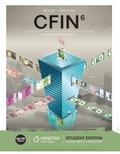
The convertible bonds have a face value of $1,000 which can be converted into 25 common shares.
Convertible bonds or debenture is a type of bond which has the option of converting the bonds to common shares. Each share price or the conversion price is determined by the face
Conversion ratio is the number of shares which the investor will receive per bond, whereas, conversion price is the price which is paid for obtaining each stock by converting the bond.
Conversion price could be calculated as follows:
Explanation of Solution
Calculate the conversion price or the market price of the stock as below:
Therefore, the minimal stock price that would be beneficial for stockholders to convert their bonds is
Want to see more full solutions like this?

 EBK CONTEMPORARY FINANCIAL MANAGEMENTFinanceISBN:9781337514835Author:MOYERPublisher:CENGAGE LEARNING - CONSIGNMENT
EBK CONTEMPORARY FINANCIAL MANAGEMENTFinanceISBN:9781337514835Author:MOYERPublisher:CENGAGE LEARNING - CONSIGNMENT

